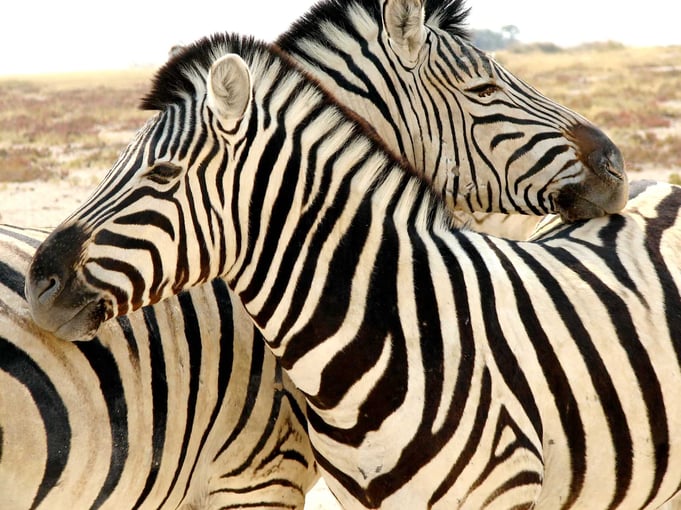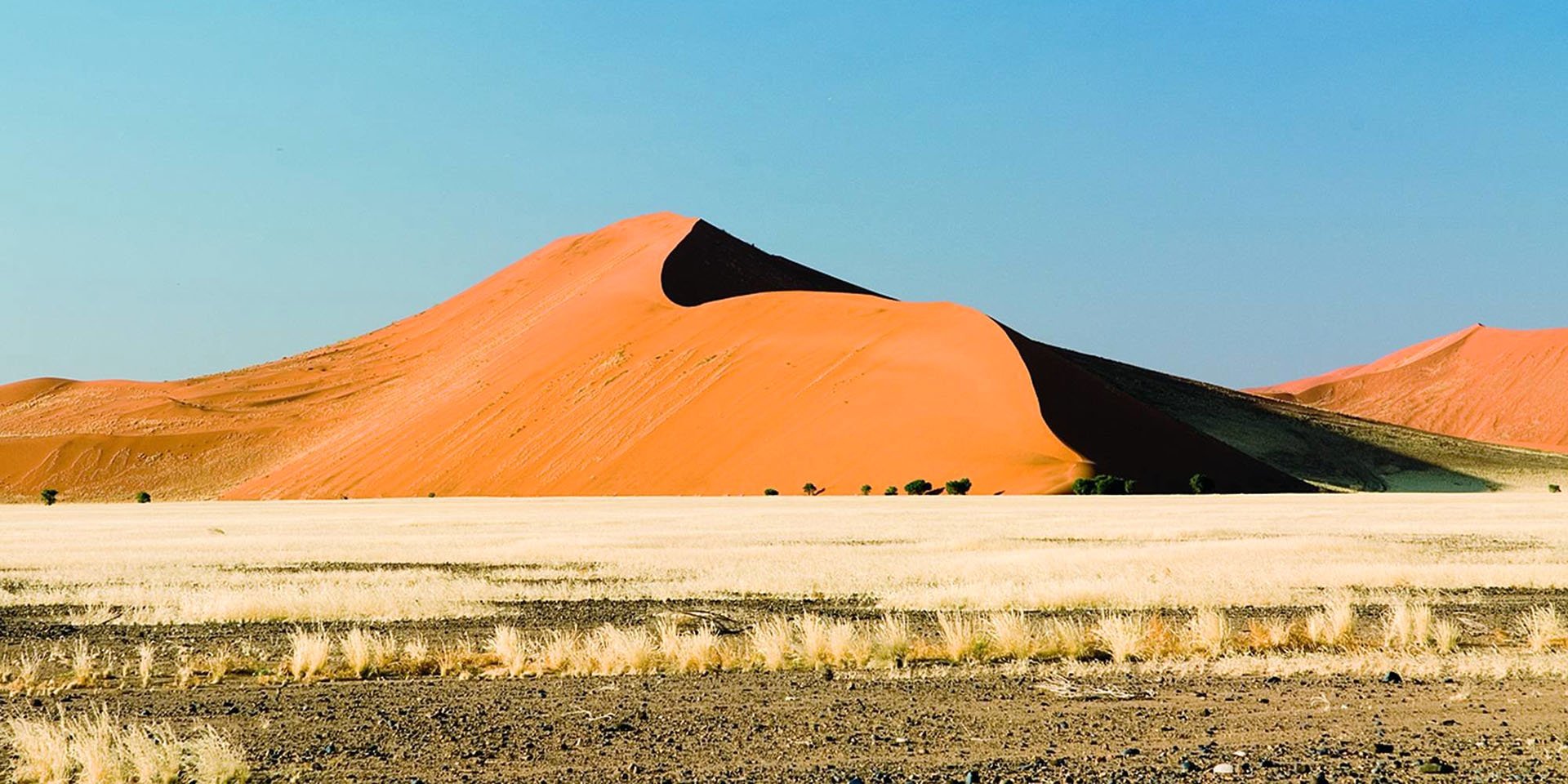White stripes on black or black stripes on white? Although our perceptions may differ, we can all agree that the zebra has one of the most striking coats seen in the animal kingdom.
Two species of zebra occur in southern Africa: Burchell’s (or plains) zebra Equus burchellii and mountain zebra Equus zebra. Both Burchell’s zebra and the mountain zebra sub-species, Hartmann’s mountain zebra Equus zebra hartmannae, which is listed as vulnerable on the IUCN Red List of Threatened Species, are found in Namibia. (The Cape mountain zebra is restricted to reserves in South Africa.)
Although zebras’ pied colouring serves to camouflage Hartmann’s zebra in mountainous areas, it often seems to be clearly visible in grassland, accentuated against the tawny shades of the antelope species, posing the question as to the evolutionary purpose for zebra stripes. Many hypotheses have been voiced over the years. One of the more naive explanations we receive as children simply describes zebras as horses wearing pyjamas, while the African legends have a tale about Zebra falling into the fire while challenging Baboon, burning the well-known stripes onto his skin.
It has been suggested, however, by those with more of a scientific bent that zebra stripes have a more practical and life-affirming purpose, to deter predators. Stripes merge when seen from a distance, making it more difficult for a predator to distinguish a single animal from the group, a definite advantage for herd animals. Because predators will always try and single out an individual animal, zebras’ safety depends on tight bunching. This trait can be seen in breeding groups when the mares and foals keep to the front and the stallion takes the rear.
Stripes may also serve to confuse a predator as they narrow towards the head, neck and shoulders, widen towards the rump and break the outline of the animal, presenting a distorted image, making it difficult for the predator to judge the size, distance and direction the zebra is moving. The stripes also enable zebras to follow one another at night in poor visibility and amidst dust thrown up by their hooves when the big cats are out on the prowl.
Zebras are preyed upon by lion, leopard, cheetah, hyaena and wild dog, animals that hunt using different methods and at different times of the day and night, making overall protection important at all times.
Experiments reveal that zebras are attracted to stripes, finding them visually stimulating, another mechanism programmed into their genes to ensure the herd animals remain together. Some scientists also believe that because colours absorb or reflect heat at different rates, black and white stripes may create a convection current, keeping them cool.
An interesting evolutionary hypothesis suggests that the zebra developed stripes over time to allow it safe passage down the African continent through tsetse fly areas. Stripes deter the blood-sucking pest that targets large surfaces. This may explain why the predecessors of the zebra managed to survive in Africa unlike those of other Equus groups. (Domesticated horses were introduced much later by the early settlers.)
In the wild, survival tactics take all forms and shapes and animals have perfected methods to ensure their survival. If solitary, camouflage, stealth and silence provide protection, and if sociable, safety is often found in numbers. In addition, some animals have built-in weapons such as horns, and others, like zebras, depend on their colouration and patterning – their dazzling black and white pyjamas - to baffle the enemy.
Contact for collectors: Philately Services, Private Bag 13336, Windhoek; Tel +264 (0)61 2013097/99, philately@nampost.com.na







SUBMIT YOUR COMMENT